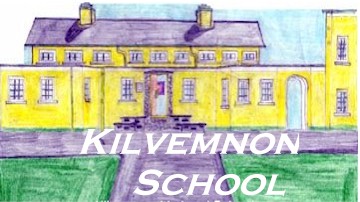A Short Biography Of Charles J. Kickham
Poet, Novelist and Patriot.

A portrait of Charles J. Kickham (1828-1882) by Ned Tobin (6th Class)

Charles Kickham was born in 1828 at Cnoccenagow, which is two miles from Mullinahone, Co. Tiperary, Ireland. He was a patriot, novelist and poet.
His father, John was a shopkeeper, farmer and an ardent follower of O' Connell. His mother, Anne O' Mahony, came from Mocklershill near Cashel and was said to be a cousin of John O' Mahony, who founded the Fenian movement in New York on March 17th, 1858.
He attended the local school but was mostly educated privately at home by his tutor James Fox. Reading aloud was a custom in the Kickham household and Charles became familiar with the works of Dickens and Shakespeare. The Nation, a local newspaper, was also read written by Thomas Davis.
Charles J. Kickham's epitaph states that he was a 'journalist, novelist, poet but before all a patriot'. Kickham never let his physical disabilites defeat his determination to make a contribution to Irish freedom. In Mullinahone in 1848 Kickham, as a twenty year old, participated as a local leader in the Young Ireland rebellion. Kickham was about five foot ten or eleven inches high and stoutly built. He wore black hair in long ringlets on his neck. His beard was also black and flowing. Several thousand men from Mullinahone and the streets of the village joined the Young Irelanders in the rebellion.
In the1850' s Kickham developed his journalistic skills by writing in the local papers and he began to publish poems and short stories for which he is famous-works such as 'Rory of the Hill' and 'Patrick Sheehan'.
Kickham joined the Irish Republican Brotherhood (IRB)-popularly known as the Fenians-which was founded by three men from this area, James Stephens, John O' Mahony and Michael Doheny who had fought in the 1848 rising.
On 6 January 1866, Kickham was sentenced to fourteen years's in jail for being a member of the IRB.
Kickham's health, which was never good, was now very bad but he felt that suffering made him strong. Indeed, he stated in a letter to a relative from his jail cell 'I can endure inflinchingly, all that many can inflict upon me'.
From his walks about the parish through Kylatlea, Boherboy and Gurteen or to Modeshill, Lismalin, Poulecapple and Ballyduggan, Kickham knew everybody in Mullinahone and he wrote: 'Whenever I turn I am greeted with something more deep and touching than mere popularity'. It was in Mullinahone Charles Kickham wrote 'Knocknagow': or The Homes of Tippperary, the classic Irish popular novel of it's time.
Through the 1870's before his early death at the age of fifty-four, Kickham continued writing poetry and fiction adding to his novels 'Sally Cavanagh' and 'Knocknagow', 'The Eagle of Garyroe'. In 1870's too, until his death Kickham was Preisdent of the Supreme Council of the I.R.B. When Kickham was laid to rest in 1882 it was said: 'Surely in some distant time when Irishmen visit the shrines of their illustrious dead this lonely Tipperary grave will not be forgotten'.
